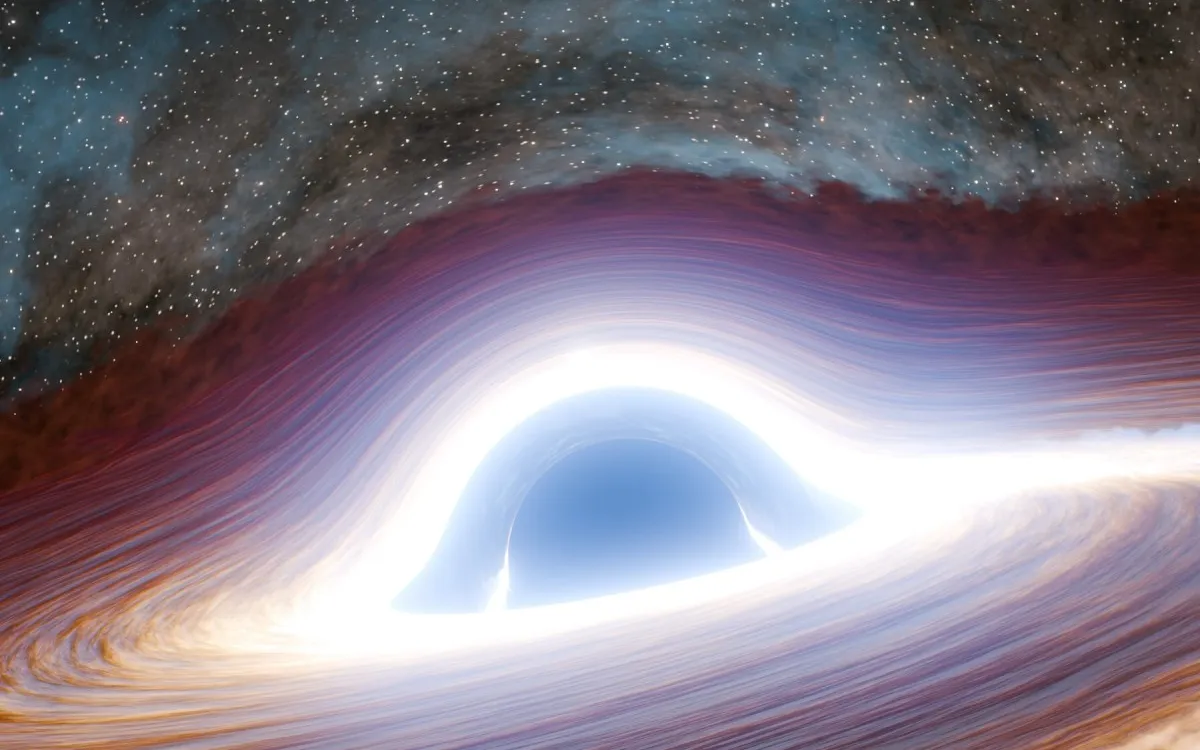
In a remarkable scientific breakthrough, astronomers have documented the most energetic flare ever observed from a supermassive black hole. This extraordinary event briefly radiated with the luminosity of an astonishing 10 trillion suns. The pivotal findings were published on Tuesday in the prestigious journal Nature Astronomy, with the study led by esteemed astronomer Matthew Graham from the California Institute of Technology (Caltech).
This phenomenal burst of energy is believed to have been triggered when a surprisingly large star ventured too close to the supermassive black hole. The gravitational forces at play caused the star to be violently shredded and ultimately consumed. “However it happened, the star wandered close enough to the supermassive black hole that it was ‘spaghettified’—stretched out to become long and thin due to the intense gravitational pull as it approached the black hole,” explained KE Saavik Ford, an astronomer and co-author of the study. The material from the star then spiraled around the black hole as it was drawn in, creating the impressive flare.
The supermassive black hole responsible for this remarkable event is situated approximately 11 billion light years away from Earth and boasts a mass around 300 million times that of the sun. To put this distance into perspective, a light year is the distance light travels in one year—equating to about 5.9 trillion miles (or 9.5 trillion km).
The star involved in this cosmic phenomenon is estimated to have a mass between 30 and 200 times that of the sun. As it approached the supermassive black hole, it was transformed into a stream of gas that heated up significantly, shining intensely as it spiraled toward its doom.
Almost every large galaxy, including our own Milky Way, harbors a supermassive black hole at its center. However, the exact processes behind their formation remain a mystery to scientists. First detected in 2018 by the Palomar Observatory, which is operated by Caltech, this extraordinary flare took approximately three months to reach its peak brightness. Remarkably, it became about 30 times more luminous than any previously recorded event of its kind. Although the flare is still ongoing, its brightness is gradually diminishing, with the entire event expected to unfold over the next 11 years.
Due to the significant distance of the black hole, observing this flash provides scientists with a rare opportunity to peer into the universe's early epoch. By studying these immense and distant black holes, researchers aim to gain a deeper understanding of their formation, their influence on local stellar neighborhoods, and the fundamental interactions that have shaped the cosmos we experience today.